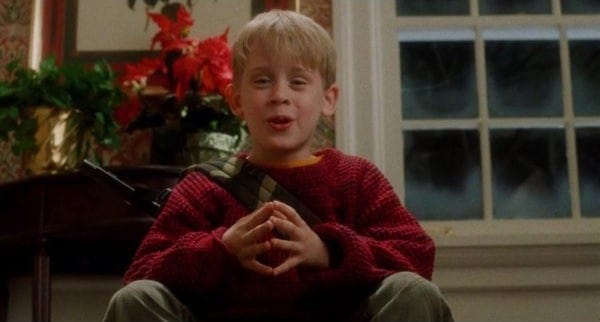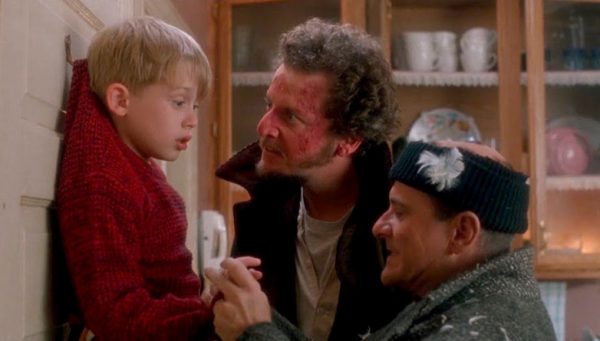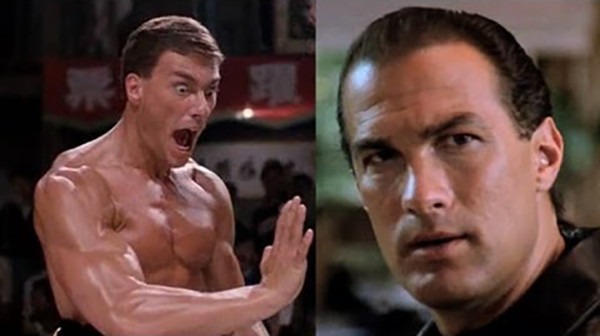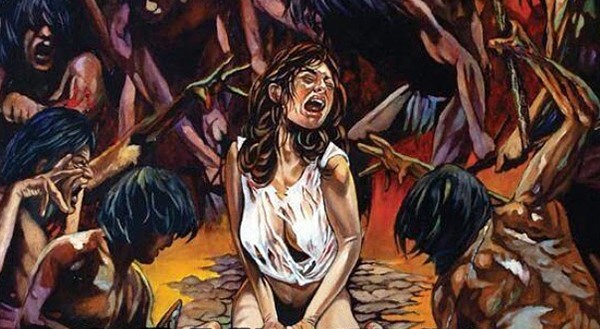Tom Jolliffe looks at Home Alone 1 and 2 in comparison to every sequel and rip off which followed, and the secret of Chris Columbus’ success…
It’s Christmas season and by law you will at some point be watching Home Alone. It might also come to pass that you’ll follow up the original seasonal classic, with its enjoyable (if somewhat carbon copy) follow up, Home Alone 2: Lost in New York. The original film was something of a revelation. It had plenty of hallmarks you’d expect from John Hughes, combined with a plethora of inspiration from Chris Columbus in the directors chair. The iconic film saw a wealthy family somehow manage to leave the youngest member at home alone after leaving for a trip to Paris. Much has been pondered over the years about just where Kevin McCallister’s dad (John Heard) got all his money. A house that big, and the ability, with no second thought, to fund a Yuletide trip for extended family too, suggests a career with mob ties. Given his seeming indifference across two films to Kevin’s disappearances, you’d imagine he’s seen a few mobster flunkies being sent to sleep with the fishes. There’s not much empathy with Pa McCallister (who leaves poor Catherine O’Hara to deal with everything).
We also have the most popular theory doing the rounds, which is that Home Alone is actually a prequel to Saw. Kevin McCallister (Macaulay Culkin) beginning his progressive journey to inevitably becoming Jigsaw. All these elements aside, Home Alone has humour, a little heart, enjoyable performances and great set pieces. The second film repeated the formula, upping the ante here and there but in doing so also kept the recipe just as tasty. More sequels followed, first with Home Alone 3, which followed a similar story but with a new protagonist. Then a fourth, which was a TV movie, a fifth film that was only loosely ‘part’ of the series. Then we’ve had the recent reboot on Disney Plus, Home Sweet Home Alone. What is a common feature with all the follow ups and the almost limitless riffs and ripoffs that have appeared through cinema and video land (with titles like Baby’s Day Out, Bone Alone, or Pups Alone)? Nothing ever comes close to the Hughes/Columbus twosome which launched Mac Culkin to superstardom. Why have they never come close?

For one, whilst Culkin was the ultimate poster child for the slightly obnoxious but precocious American child protagonist, he also had something that most of the child leads since haven’t quite had. He had a distinct charisma. There’s a complexity to Mac’s performance, which is probably drawn out by Hughes and Columbus too. At heart he’s a good kid. He’s also a shitbag too, and he knows it sometimes. There’s also that underlying coldness. Those moments, once he’s locked into battle with his human foe, where his humility and empathy is ebbing away. Like, this kid could kill and he’d probably find it funny. He seems to revel in it, but with an undercurrent of it feeling believable. He sells it well.
In the recent Home Sweet Home Alone, Archie Yates (so great in Jojo Rabbit) doesn’t quite sell that. His traps are even more elaborate, maybe pushing the limits of reality even more, but whilst he’s inevitably revelling in his work paying off, it’s not as convincing. Maybe an inconsistency in Culkin as a performer then, aided that duality. Sometimes he’s animated and sassy. Other times he’s blank, there’s nothing there, just soulless, and that kind of adds a layer to Kevin.

Having recently watched another Home Alone formula film Pups Alone, you have one of the key differences between OG and imitators on full display. Pups opts for the animal vs. bumbling crooks routine, which seems to have long been a popular riff on the Home Alone mould. In an odd mismash of ideas, the actual crooks vs. pups element is pretty minimal (with much also taking place at a Ski-Lodge with the holidaying protagonist family). Here’s the thing. Dogs lay out traps and the dumb crims inevitably fall foul of them. No moment has impact. No skit is successfully pulled off, as the editing never nails the timing required to set the delivery and punch line of a good trap. Inevitably in a film like this, there’s a complimentary groin hit sent the way of the ne’er do well. I never thought I’d see Dolph Lundgren taking groin shots from traps set by precocious hounds, but it happens. It just never quite works (although the film is affably goofy and good natured).
The same could be said of most of Home Alone 3 through 5, Bone Alone and all the rest. One film that almost pulled it off was Baby’s Day Out. It tapped into the Looney Tunes aspect that Columbus had with the first Home Alone movies, and whilst a baby protagonist limits you, it’s probably little different than having a dog. It was written by John Hughes which certainly means the right boxes are ticked. Still, not a patch on Kevin’s misadventures against Joe Pesci and Daniel Stern.

The supporting casts in the first two Home Alone films certainly add class, whether it’s Robert Scott Blossom (aka the Old Man) or John Candy in the first, or Tim Curry, Rob Schneider and Brenda Fricker in the second, you’ve got great back up. Additionally our villains are superb. The dual shenanigans of Pesci and Stern, their chemistry and timing is unmatched. They’re a perfect twosome of bumbling, but dangerous villainy. All of this aside though, it was in watching the first two films again recently that I appreciated this big gap between the OG’s and the pretenders. The set piece payoffs. There are a few elements that make these successful. Performances aside (Pesci and Stern sell the pain brilliantly), they’re shot and edited to perfection. The timing is almost musical, right out of Tom and Jerry/Looney Tunes classic era violence.
The skits themselves sell the crunching pain but elaborate nature of Kevin’s traps. Whilst they are almost sadistically elaborate in places, they’re never wholly inconceivable (there’s a moment in Home Sweet Home Alone with our bumbling but awkwardly performed crooks where one is outrunning hefty icicles which kind of feels too much). Columbus times everything to perfection. We’ve seen the preparation Kevin goes through in his MacGyver/A-Team-esque montages, and the payoffs are perfectly timed. Even when we see gags repeat in the second film from the first, they’re so perfectly delivered they still send me into a belly laugh. It’s an art form, much like crafting a great shootout or a fight scene and not everyone (clearly) can pull it off. It’s not enough to have an imaginative trap. It’s all about delivering the visual gag with a cohesion of clarity, timing and performance. Home Alone 1 and 2 consistently nailed the landing.

I think back to the opening of Home Alone 2: Lost in New York, Buzz spoils Kevin’s choir solo to the amusement of a cruel and baying crowd, revelling in the embarrassment of a 10 year old boy, but as Kevin pushes back, causing a domino effect of kids falling off their podium positions, the whole thing culminates in a standee toppling over which knocks the elderly piano player off her stool, laid out cold on the floor. It’s just a master-class in comic timing and delivery (I laugh till it hurts every single time), and this aspect is something that is consistently overlooked in these types of film. Editing now, especially in mainstream material can often seem functional over meaningful, or overly intrusive over coherent. The language of film, the art of timing, or giving a moment impact can be lost.
So Home Alone and its first sequel (particularly) might lack subtlety, and maybe even opt for cheap sentimentality over dramatic weight (these are Xmas escapist staples after all), but where it really matters, those quintessential Home Alone set ups and payoffs, it delivers the goods and perhaps the imitators have long focused on the wrong aspects of the formula. One additional and key difference too, is also in the fact that the original films have a gamut of elements that appeal to young and old, whereas so many of the further sequels and riffs feel decidedly aimed squarely at young kids. Ultimately those first two films continue to pick up new audiences and retain their watchability among those who grew up watching it.
What are your thoughts on Home Alone 1 and 2? What is the best sequel or riff? Let us know on our social channels @flickeringmyth
Tom Jolliffe is an award winning screenwriter and passionate cinephile. He has a number of films out on DVD/VOD around the world and several releases due out in 2021/2022, including, Renegades (Lee Majors, Danny Trejo, Michael Pare, Tiny Lister, Nick Moran, Patsy Kensit, Ian Ogilvy and Billy Murray), Crackdown, When Darkness Falls and War of The Worlds: The Attack (Vincent Regan). Find more info at the best personal site you’ll ever see here.














